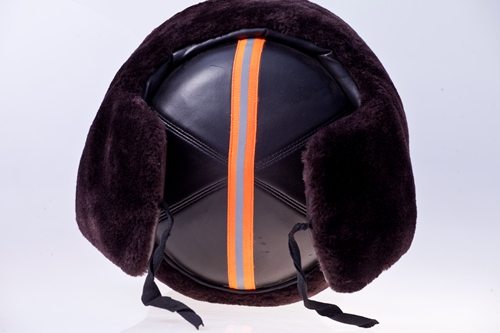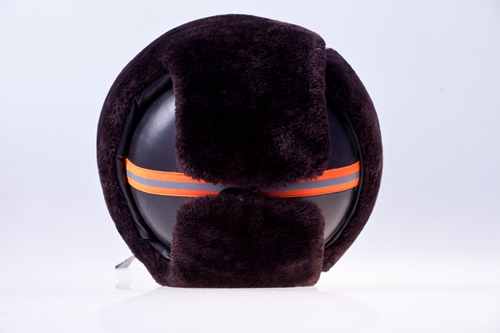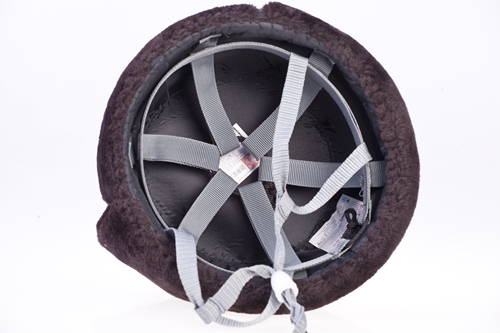Safety Helmet Hat with Brim & Ear Defenders—Why Choose Ours?
Cold-Proof Safety Helmet With Reflective Effects: Field Notes From Winter Job Sites
If you’ve ever tried pouring concrete in sleet (been there), you already know why a safety helmet hat isn’t a luxury—it’s survival gear. This model blends a protective hard shell with a warm inner cap and 360° reflective details. It’s built in Hengshui, Hebei, at 26 YongPing Road, and, to be honest, the first time I handled it the cow-leather outer surprised me—rugged yet presentable on site. Actually kind of classy.

Why it matters now
Industry trend check: extended construction seasons in colder regions, night shifts for infrastructure, and stricter visibility policies are pushing demand for insulated, reflective PPE. Many supervisors tell me they’re tired of workers layering beanies under helmets (bad fit, bad protection). The integrated approach here solves that without compromising the shell’s performance.
Core specs (quick view)
| Outer surface | Cow leather or artificial leather |
| Inner surface | Cashmere / chenille / artificial short velvet (user-selectable) |
| Inner shell | ABS, HDPE, or FRP (impact-resistant) |
| Suspension | 4–6 point, adjustable; optional chin strap |
| Temperature range | ≈ -30°C to +50°C (real-world use may vary) |
| Reflective | 360° pattern; retroreflectivity ≈300 cd/lx·m² |
| Estimated weight | ≈ 430–520 g depending on shell |
| Standards | Factory ISO9001; can be produced to EN 397 / ANSI Z89.1 on request |
| Colors | Black, brown, blue, red, green, grey, others |
In internal tests, typical impact force transfer was ≤5 kN and no penetration with a 3.0 kg striker at 1 m drop at -20°C, which, frankly, is what you want during freezing night pours. Optional FRP shells can target higher dielectric performance (up to ≈20 kV class, lab-dependent) [check cert path].

Process flow (how it’s made)
Materials selection (ABS/HDPE/FRP) → injection/compression molding → leather cutting and stitching → plush lining fit-up → reflective decal/strip application → suspension assembly → QA (drop, penetration, cold conditioning) → documentation (lot traceability) → packing. Service life is typically 3–5 years; retire earlier if the shell shows UV chalking, cracks, or after major impact.
Where crews are using it
- Winter construction and scaffolding at height
- Mining portals and tunnel night shifts (visibility matters)
- Oil & gas pads and pipeline ROWs in sub-zero winds
- Utilities, rail, and road maintenance during shoulder seasons
One foreman told me, “Our night crew stopped doubling up beanies under helmets; fit is better and fewer adjustments mid-shift.” It seems that comfort gets you compliance—no surprise.
Vendor snapshot: who to buy from
| Vendor | Materials | Cold rating | Cert path | Lead time | MOQ | Price |
|---|---|---|---|---|---|---|
| Hebei Manufacturer (this model) | ABS/HDPE/FRP + leather | ≈ -30°C | ISO9001; EN 397/ANSI Z89.1 on request | 15–20 days | ≈200 pcs | Mid |
| Generic marketplace seller | ABS + faux fur | ≈ -5°C | Limited/unknown | 30–45 days | ≈500 pcs | Low |
| EU premium brand | HDPE/FRP + technical textile | ≈ -20°C | ANSI/EN ready | 7–10 days (stock) | 1–50 pcs | High |
Customization and logistics
Logo print, reflective pattern layout, shell material, and lining fabric are configurable. Packing: 80×32×70 cm cartons; a 20' container111 fits ≈4000 units. Ship by sea, air, or express. Production time: 15–20 days after advance payment. Origin: Hengshui City, Hebei, China.

Mini case study
Northern pipeline project, mid-winter: crews swapped to safety helmet hat models with chenille lining and high-vis green. Reported outcomes over 6 weeks: fewer complaints about ear cold, fewer suspension readjustments, and spotters said the reflective trims “pop” under floodlights. Not scientific, I admit, but consistent with field notes.
Final take
If your worksite mixes cold, wind, and low light, a safety helmet hat with integrated insulation and reflective cues is a smart upgrade. The leather finish isn’t just cosmetic—it shrugs off sleet and scuffs. Just align your material choice (ABS vs. HDPE vs. FRP) with the certification route you need and document it clearly on the PO.
- ANSI/ISEA Z89.1—Industrial Head Protection (latest edition).
- EN 397:2012+A1:2012—Industrial Safety Helmets.
- ISO 3873—Industrial safety helmets.
- ISO 9001—Quality management systems (factory certified; legacy 2000 standard maintained).
-
Essential Guide to Safety Helmets for the Oil and Gas Industry
NewsNov.24,2025
-
Essential Guide to Safety Helmet for Baby – Protect Little Explorers with Confidence
NewsNov.24,2025
-
Comprehensive Guide to Safety Helmet Factory – Global Insights & Innovations
NewsNov.23,2025
-
Rockman Safety Helmet: Ultimate Industrial Head Protection Guide
NewsNov.23,2025
-
Race Safety Helmet – Essential Protection for Motorsport Champions
NewsNov.22,2025
-
Offshore Safety Helmet Guide: Protecting Workers in Harsh Marine Environments
NewsNov.22,2025
